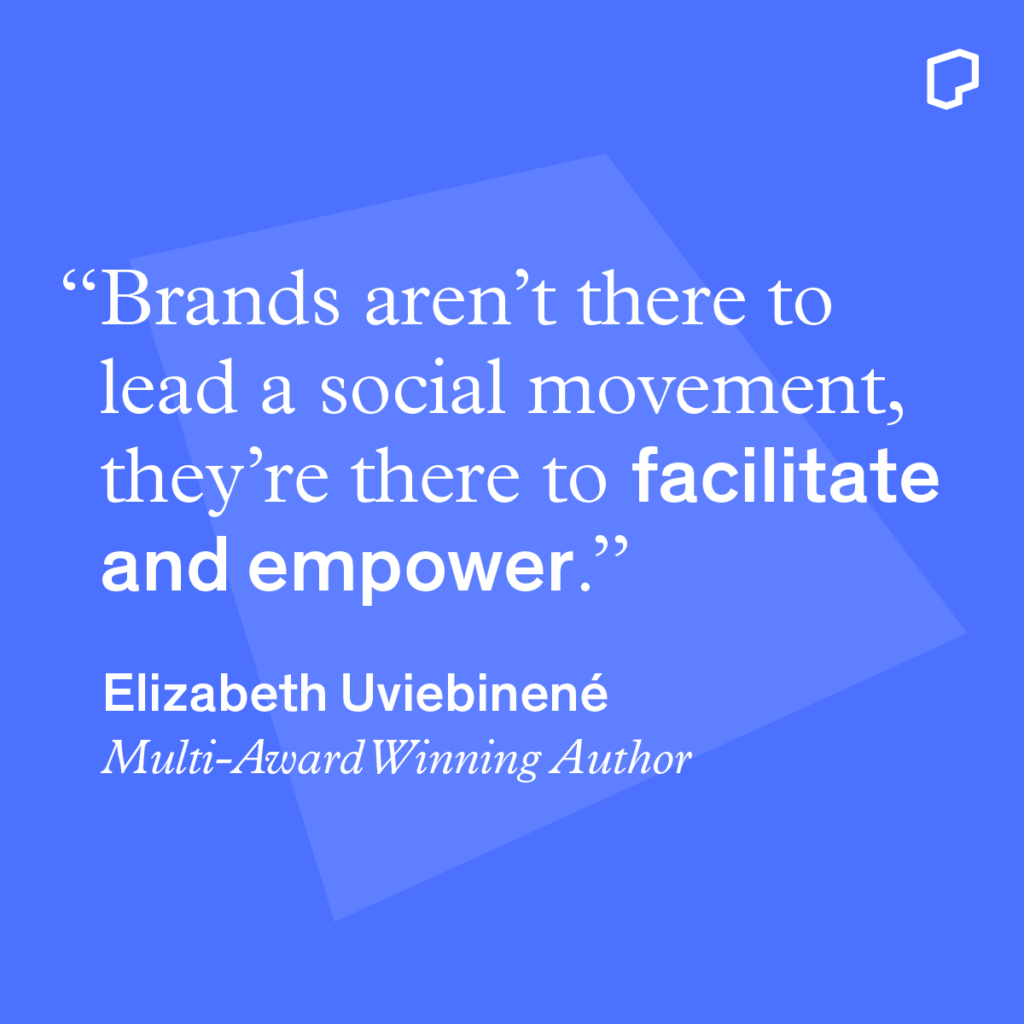From Audience to Activist: Putting Participation at the Heart of Communications
November 6, 2020
In the last decade, we’ve seen a shift in marketing ideology, where it’s become more important to have a brand purpose – something that helps a brand stand out and gives them a reason to exist in consumers’ hearts and not just in their minds. At Purpose, we have seen this sea change continue in 2020, pushing us past the boundaries of brand purpose and into a new frontier of possible change.
Last week, Purpose held a virtual panel entitled “From Audience to Activist,” where we explored the evolution of the marketing model, the idea of what makes a brand different in the marketplace, and what language marketers can use to define their brands for consumers.
We connected with activists, campaigners and branding experts to learn how traditional marketing models are evolving – putting audience participation at the heart of communications, and empowering brands, organisations and their consumers to create true social impact. Purpose was delighted to hosted this conversation alongside our panel of experts:
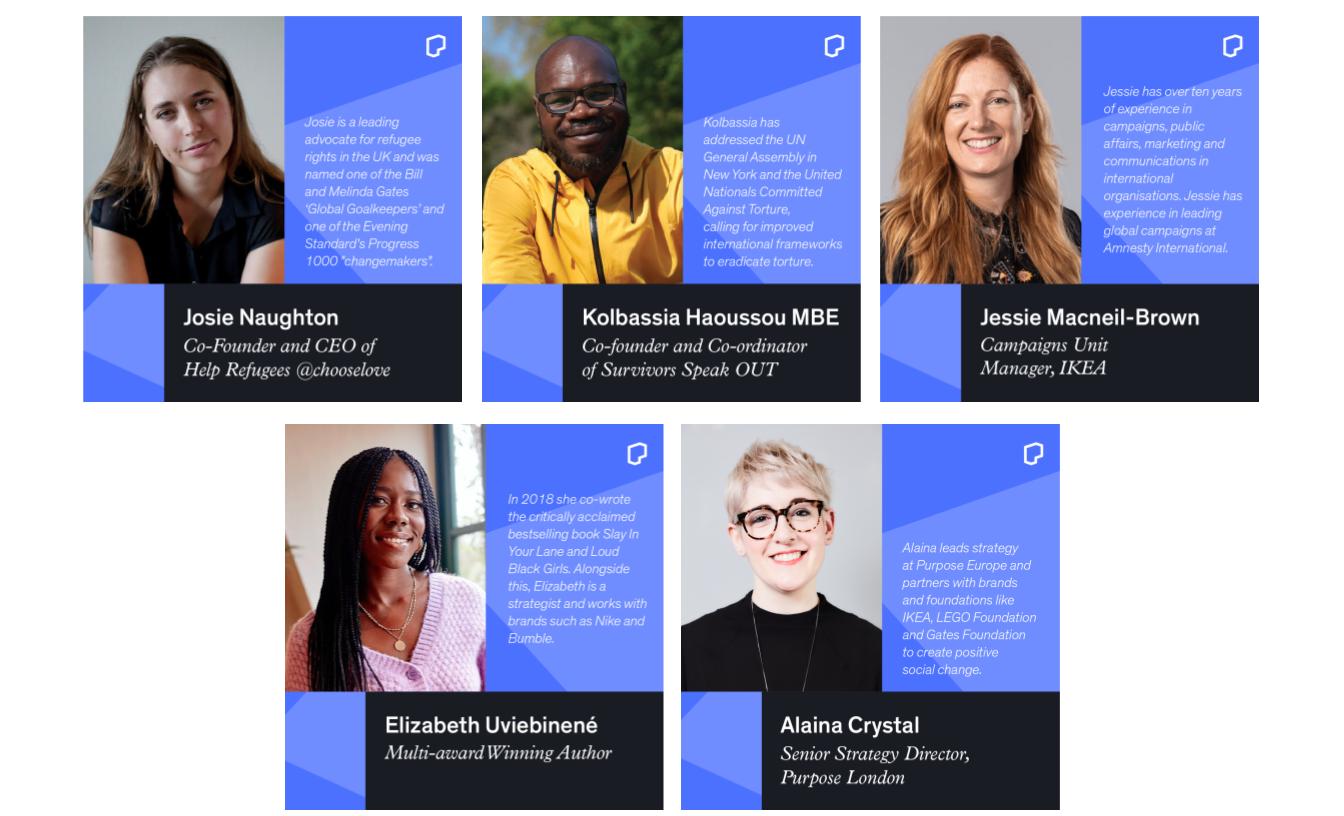
• Jessie Macneil-Brown – Campaigns Unit Manager, IKEA
• Elizabeth Uviebinené – multi-award-winning author
• Josie Naughton – Co-Founder & CEO of Help Refugees
• Kolbassia Haoussou MBE – Co-founder & Co-ordinator of Survivors Speak OUT, the survivor-led activist network
Missed the event? Watch a recording of “From Audience to Activist” here.
Here are 5 key lessons to take away:
1. Live up to consumers’ expectations.
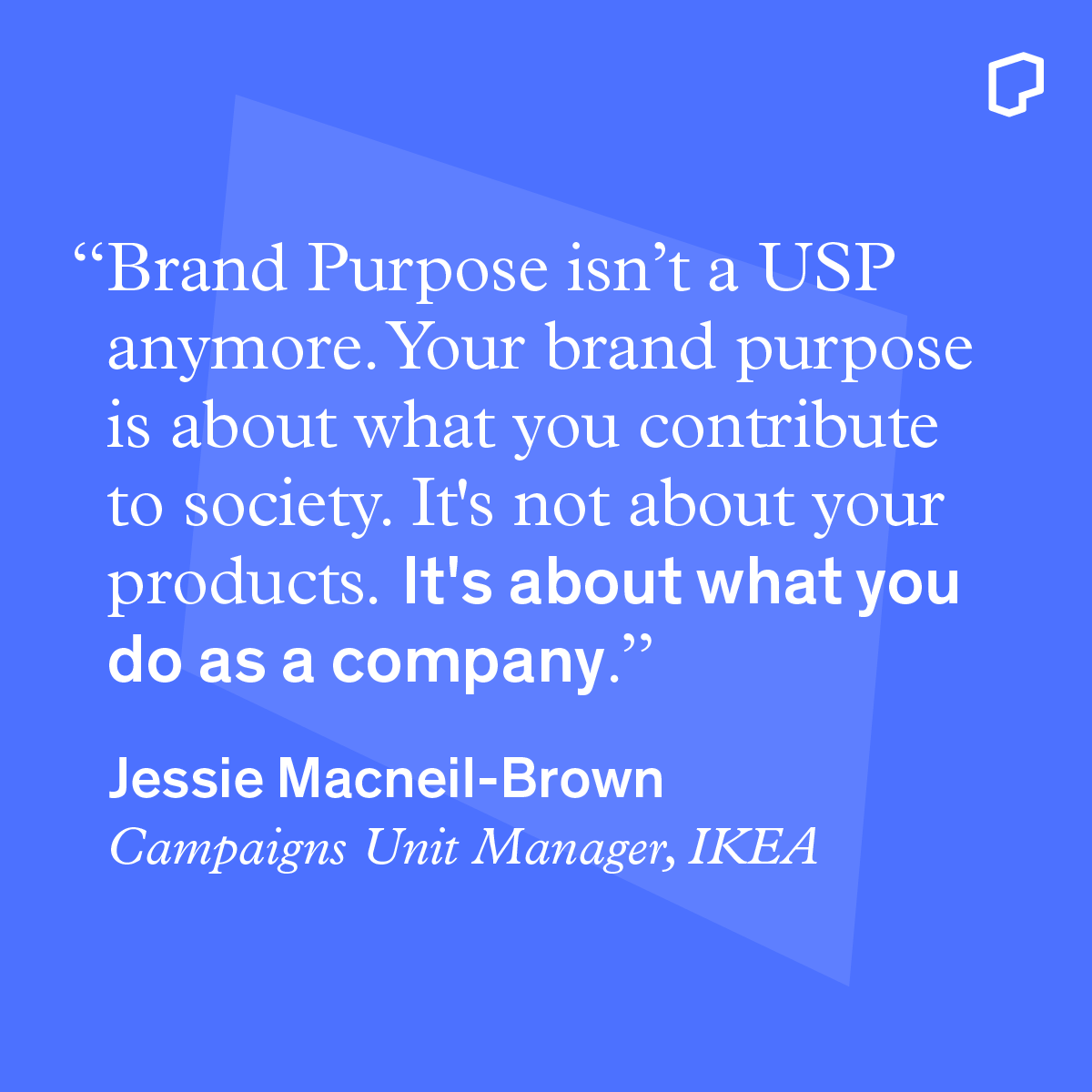
In recent years, we’ve seen people take to the streets to express their views and ensure their voices are heard on issues that matter most to them. With this explosion of activism, particularly amongst young people, not only are they expecting more from brands but they are asking brands to step up and turn their “purpose” into action and impact. Having a brand purpose internally is no longer enough; young people want an aligned, side-by-side approach, where brands provide the opportunity to participate in change – and the scale to amplify voices that aren’t heard often enough. The challenge for marketers is how to evolve from an old-power approach of telling consumers about their brand’s purpose, to a new power approach that enables the audience to participate in meaningful change.
2. Help employees do their part.
Putting power into the hands of employees can take a purpose off the page and into the fabric of the business. One of a brand’s greatest assets comes down to having employees who believe in the mission and help drive this change forward when they are given the opportunity to align their values with the positive value the business is creating.
Conversely, we’ve seen employees speaking out on brands who don’t deliver their purpose within their own ecosystems, and this is where authenticity and consistency is key. Earlier in 2020, fashion brand Reformation donated to a number of racial justice charities and organisations in the wake of the George Floyd protests. However, following this outpouring of support for the Black Lives Matter movement, Reformation was criticised for their internal practices by a black former employee, who stated she was “being overlooked and undervalued as a woman of colour who worked and managed their flagship store for three years.”
Brands need to ensure their purpose weaves throughout the company – from how they treat their employees, to the quality of their production line, to actioning their purposeful statements – or they run the risk of extensive damage to their reputation.
3. Determine your brand’s impact beyond donations.
Donations to non-profit partners are meaningful but they stop short of the transformational impact that brands could create. At Purpose, we believe people can remake the world in a more open, just and habitable way; and brands hold incredible power to mobilise their audiences to join them in driving this change. We work with brands in an ecosystem model which looks at the holistic impact a company can make through its customers, funding, partners, policies and voice.
How can a brand share its power with the organisations and movements it supports? What public action can be taken to supercharge its mission? Can employees be rallied to deliver outsized impact? Can a brand mobilise its consumers to campaign for policy change? It’s when this ecosystem of actions comes together that brands create credible and sustained impact – and are best positioned to leverage their purpose to deliver long-term brand value.
4. Integrate communities into your campaigns.
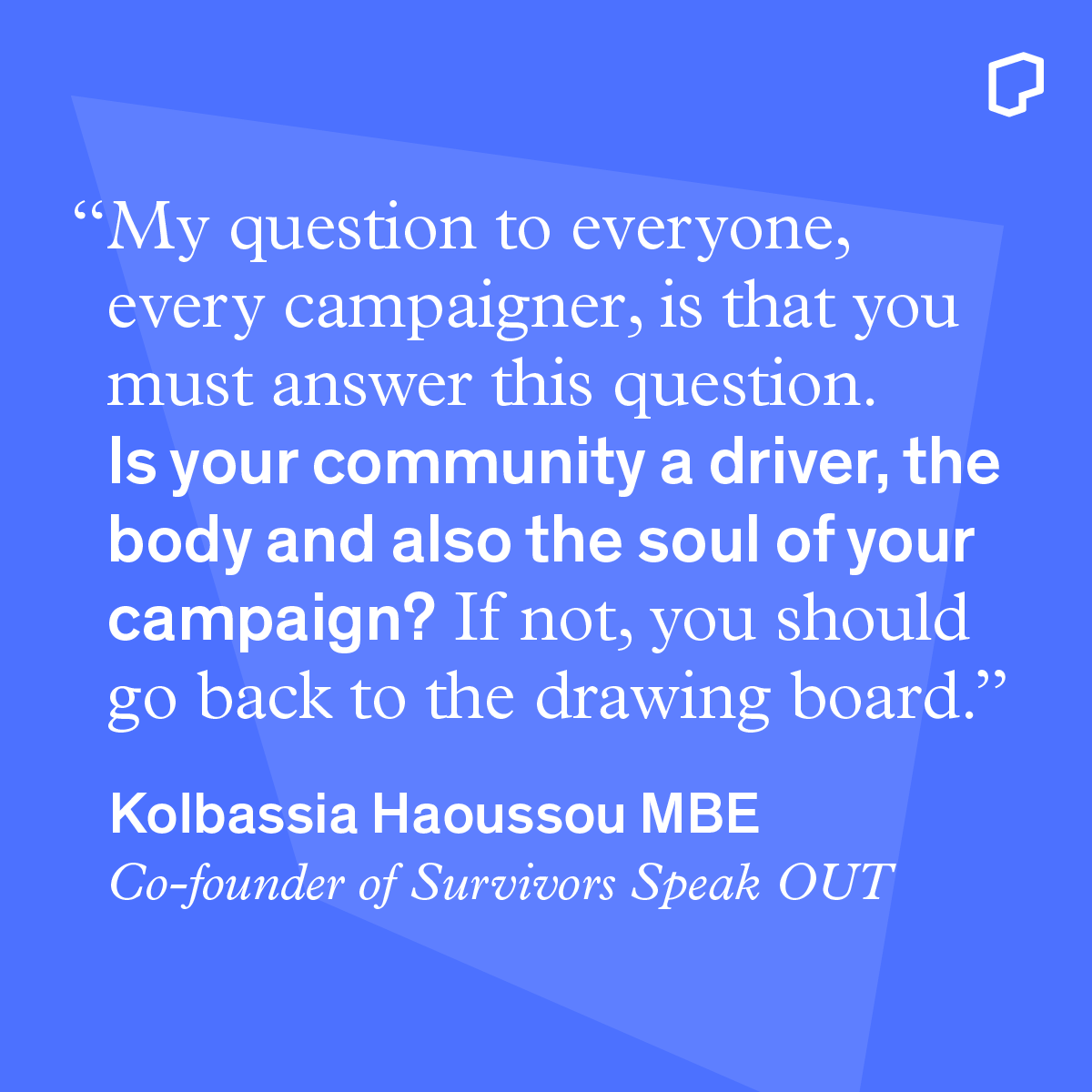
Those who are best placed to speak on social issues are the people who are most impacted, and a brand’s role can be providing scale and amplification to that existing message or movement; but this relationship has to be built over time with trust, understanding and empathy to ensure the engagement feels genuine and is additive to that community rather than exploitative.
At the forefront of any campaign, it’s important to think about who is creating it, from strategy, through creative and implementation, and ask whether these individuals are representative of the most impacted communities. The people who are evaluating the campaign need to resemble the community it is speaking to; and if those voices aren’t represented within the organisation, it’s imperative that a brand seek those voices out externally and in a meaningful way through consultation and partnership.
5. Remove your ego and take the risk.
Brands can and should recognise their power in being facilitators of social change on a grassroots level, such as working with NGO partners or existing movement builders in a side-by-side approach. Recognising that brands aren’t experts in delivering social movements can enable them to use their power to communicate these goals with their audiences, and encourage action and change on a mass scale.
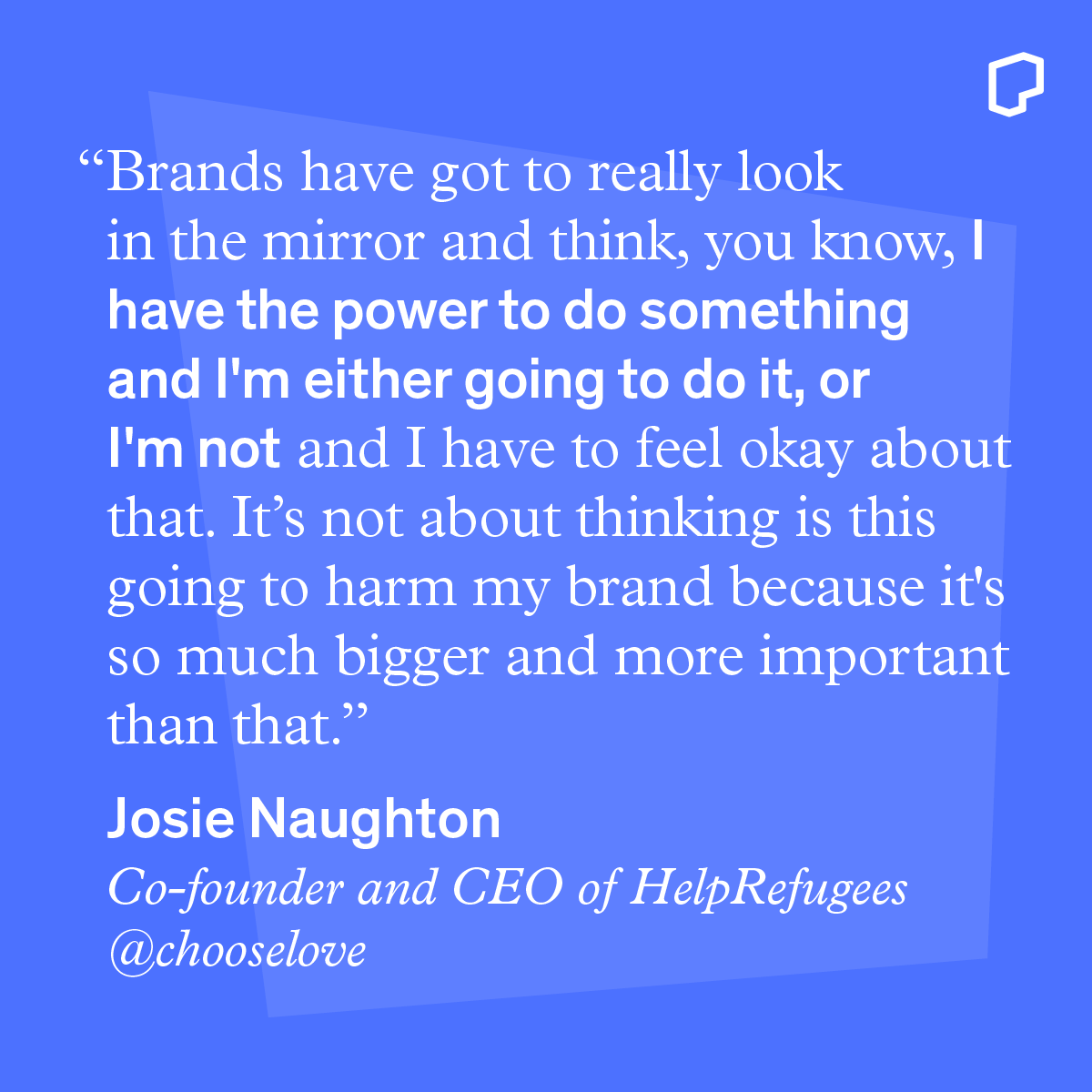
Risk is part of progress and success, and brands need to take a risk to inspire real change. By living up to their values and the purpose that they have committed to, and connecting with the audiences who can create the most impact, they can deliver a campaign in a way that feels authentic to the brand voice and the positive change desired.
Feeling inspired?
At Purpose, we help brands to integrate these lessons into their organisation. If you would benefit from guidance on defining and implementing your brand purpose, we’d love to help.
Get in touch with the Purpose team here or at weare@purpose.com.
for Equity & Evidence
